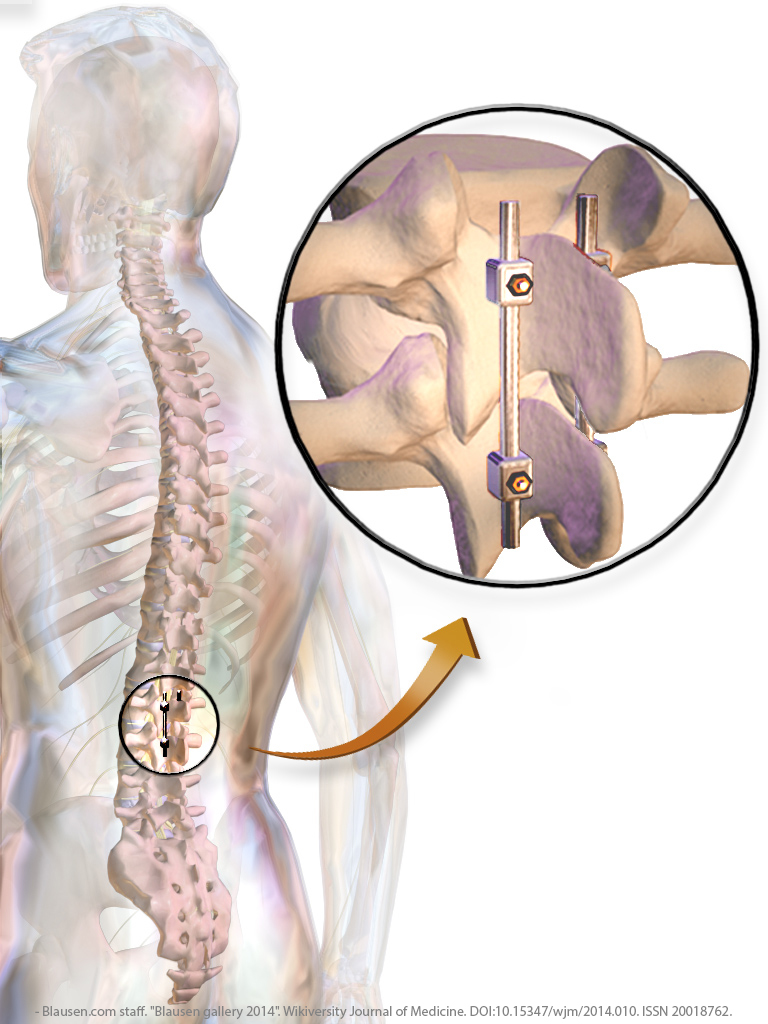
What is a spinal fusion?
Spinal fusion, also called spondylodesis or spondylosyndesis, is a neurosurgical or orthopedic surgical technique that joins two or more vertebrae. Surgeons use supplementary bone tissue—either from the patient (autograft) or a donor (allograft)—or artificial bone substitutes in conjunction with the body's natural bone growth (osteoblastic) processes to fuse two or more adjoining vertebrae.
Spinal fusion treats a variety of pathological conditions to eliminate abnormal motion of the vertebrae that causes pain, neurological deficit, or spinal deformity. Common conditions incorporating spinal fusion in their surgical treatment are spinal stenosis, spondylolisthesis, cervical discopathy, spinal fractures, scoliosis, and kyphosis.
Medical Uses
Spinal fusion is done most commonly in the lumbar region of the spine, but it is also used to treat cervical and thoracic problems. The indications for lumbar spinal fusion are controversial.[1] People rarely have problems with the thoracic spine because there is little normal motion in the thoracic spine. Spinal fusion in the thoracic region is most often associated with spinal deformities, such as scoliosis and kyphosis.
Cervical spinal fusion can be performed for several reasons. Following injury, this surgery can help stabilize the neck and prevent damage to the spinal cord. Additionally, cervical spinal fusion can be used to remove or reduce pressure on nerve roots caused by bone ingrowth osteophytes or herniated intervertebral disks.
Patients who require spinal fusion have either neurological deficits or severe pain that has not responded to conservative treatment. Spinal fusion surgeries are also common in patients who suffer from moderate to severe back deformities that require reconstructive surgery.
This article uses material from the Wikipedia article "Spinal Fusion", which is released under the Creative Commons Attribution-Share-Alike License.